The film Bathory: Countess of Blood is based on the legends surrounding the life and deeds of Countess Elizabeth Báthory de Ecsed (Hungarian: Báthory Erzsébet, Slovak: Alžbeta Bátoriová) who lived from August 7, August 1560 to August 21, 1614. Bathory known as the greatest murderess in the history of mankind. Contrary to popular belief, Elizabeth Bathory was a modern Renaissance woman who ultimately fell victim to men’s aspirations for power and wealth.
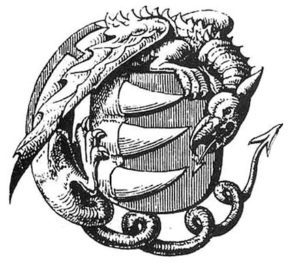
Most people believe Elizabeth Bathory was one the most notorious figures in Central Europe, known throughout history as the so-called “Blood Countess”. This 16th century Hungarian noblewoman was accused of murdering dozens, possibly hundreds of young girls in sadistic rituals at Cachtice Castle in present-day Slovakia… and then bathing in their blood.
Elizabeth Bathory has been labelled as the greatest female mass murderer in history, yet very little evidence has ever been found to prove that claim.
In this English language film, in which British actress Anna Friel plays the starring role, director Juraj Jakubisko has set out to tell what he believes is the true story; a story of a woman set up or framed because she would not give away part of her empire to György Thurzó.
Thurzó was born into the richest noble house in Upper Hungary, the Thurzó family, which was of Hungarian and Polish ethnicity. While he had an interesting life, Thurzó is perhaps best remembered for being the judge of the woman he accused of being a mass murderer, Countess Elizabeth Báthory.
The Báthory family origin dates back to the year 900 (preceding the advent of the Gutkeled clan). Legend relates how a god-fearing warrior called Vitus (a namesake of a member of the first generation of the Gutkeled clan) set out to fight a dragon, which lurked in the swamps next to the castle of Ecsed (actually built only in the 14th century) and harassed the countryside. Vitus killed it with three thrusts of his lance and as a reward received the castle. The grateful people then honored him with the names Báthory, meaning “good hero”, and animus magnanimus. In Hungarian the word bátor means “brave”.
The Báthory coat of arms (seen above), granted in 1325 to the sons of Briccius, was styled in reference to this legend: three horizontally placed teeth surrounded by a dragon biting its own tail, the surrounding dragon being the emblem of the Order of the Dragon.
Being the niece of the King of Poland and the aunt of the Prince of Transylvania, Elizabth had a strict, pious upbringing on one of her family’s many estates. She was betrothed at the age of 11 to Hungary’s warrior hero, the Black Knight, Lord Ferenc Nádasdy. At that time the Hungarians held Christian Europe’s frontline in the war against the Ottoman Turks, and Nádasdy, who was four years Báthory’s senior, was celebrated for his imaginative cruelty; playing football with the heads of Turkish captives and dancing with their corpses. Their union was most likely a political arrangement within the circles of the aristocracy.
As Elizabeth’s social standing was higher than that of her husband, she refused to change her last name, remaining a Báthory. The couple married when she was 15 (and he was aged 19) at the palace of Vranov nad Topľou (Varannó in Hungarian) on May 8, 1575. Approximately 4,500 guests were invited to the wedding.
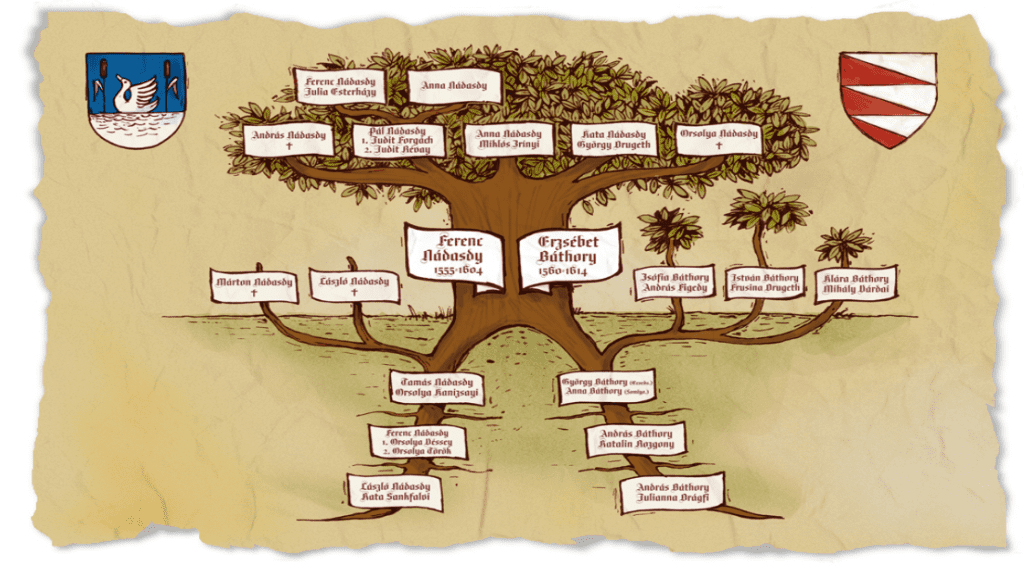
Nádasdy’s wedding gift to Báthory was his household, Čachtice Castle (Csejte in Hungarian) situated in the Little Carpathians near Nové Mesto nad Váhom and Trenčín in now Slovakia. The castle had been bought by his mother in 1569 and given to Nádasdy, who transferred it to Elizabeth during their nuptials, together with the Čachtice country house and 17 adjacent villages.

Artists rendition of what the castle likely looked like.
The castle was (and is still) surrounded by a village and agricultural lands, bordered by outcrops of the Little Carpathians.
Čachtice Castle (Čachtický hrad, Hungarian: Csejte vára) is a castle ruin in Slovakia next to the village of Čachtice.

It stands on a hill featuring rare plants, and has been declared a national nature reserve for this reason. Čachtice was built in the mid-13th century by Kazimir from the Hont-Pázmány gens as a sentry on the road to Moravia. It was intended to serve primarily as an observation post for surveillance of the road connecting Hungary to Moravia, now in the Czech Republic.

Later, it belonged to Máté Csák, the Stibor family, and then to the famous Elizabeth Báthory. Čachtice, its surrounding lands and villages, was a wedding gift from the Nádasdy family upon Elizabeth’s marriage to Ferenc Nádasdy in 1575.
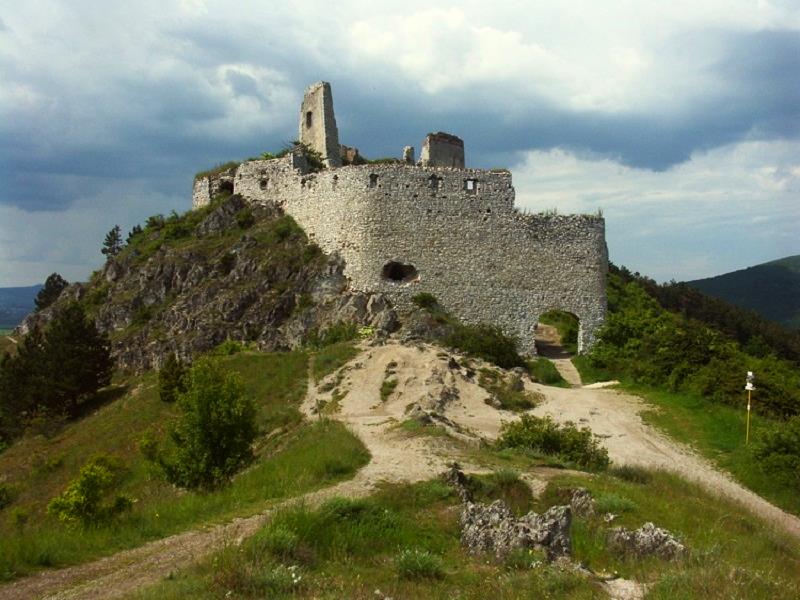
Originally, Čachtice was a Romanesque castle with an interesting horseshoe shaped residence tower.
It was turned into a Gothic castle later and its size was increased in the 15th and 16th centuries.

A Renaissance renovation followed in the 17th century.
Finally, in 1708 the castle was captured and plundered by the rebels of Ferenc II Rákoci aka Francis II Rákóczi.
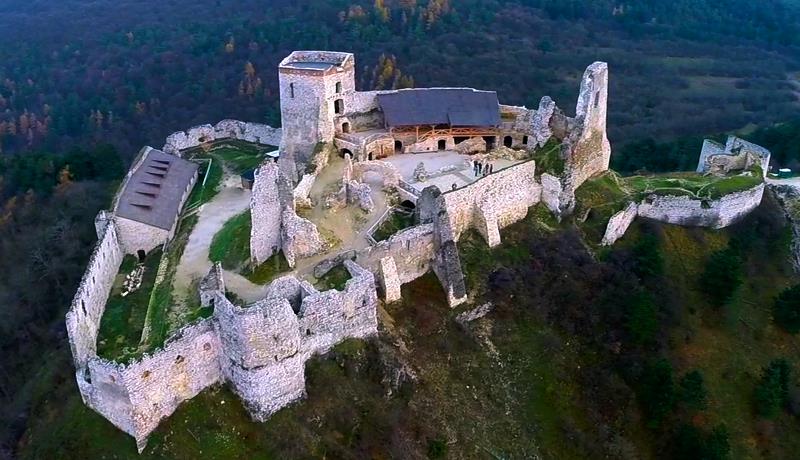
It has been in decay since.

This video takes you around the castle property as it exists today.
The castle was destroyed by the troops of Rakoczi II in 1708. Although the castle was repaired afterwards and used as a jail, it was then completely destroyed by a fire in 1772. The ruins of the castle can be still seen clearly to this day.
Elizabeth’s husband, Ferenc Nádasdy, died on January 4, 1604 at the age of 48. It is recorded that the Black Knight of Hungary died of a mysterious and sudden illness in the middle of a battle. The disease which killed the Count Ferenc Nádasdy is still unknown. It is known, however, that he had suffered a disease of the lower limbs for at least two years before succumbing to the illness.
The couple had been married for 29 years. Before dying, Ferenc Nádasdy entrusted his heirs and widow to György Thurzó, who would eventually lead the investigation into Elizabeth’s crimes.
It has been believed that Thurzó went to Čachtice Castle after Christmas (December 30, 1610) and caught Báthory in the act. Thurzó arrested Báthory and four of her servants, who were accused of being her accomplices: Dorotya Semtész, Ilona Jó, Katarína Benická, and János Újváry. Thurzó’s men reportedly found one girl dead and one dying and reported that another woman was found wounded while others were locked up. The countess was put under house arrest.
Although it is commonly believed that Báthory was caught in the act of torture, there is little evidence to support any of this. Initially, it was Thurzó himself who made the declaration to Báthory’s guests and village people that he had caught her red-handed. However, she was arrested and detained prior to the discovery or presentation of the victims. (Who planted them?)
It seems most likely that the whole idea of Thurzó discovering Báthory covered in blood has been the embellishment of fictionalized accounts which he himself began.
Thurzó debated further proceedings with Elizabeth’s son Paul and two of her sons-in-law. A trial and execution would have caused a public scandal and disgraced a noble and influential family (which at the time ruled Transylvania), and Elizabeth’s considerable property would have been seized by the crown. Thurzó, along with Paul and her two sons-in-law, originally planned for Elizabeth to be spirited away to a nunnery, but as accounts of her murder of the daughters of lesser nobility spread, it was agreed that Elizabeth Báthory should be kept under strict house arrest and that further punishment should be avoided.
The last thing these three wanted was to lose all of her land.
King Matthias urged Thurzó to bring Elizabeth to trial and suggested she be sentenced to death, but Thurzó successfully convinced the king that such an act would adversely affect the nobility.
What was Thurzó’s true motivation for such an intervention?
Well, we do know that she was thus never allowed to tell her own version of what happened. She was never allowed to defend herself. You see, the fabulously rich Elizabeth Báthory enjoyed huge power and influence in a society in which women had few rights – and this was her greatest enemy. She never had a chance to defend herself, despite her wealth, knowledge and power – and it was precisely because of her wealth, knowledge and power that it was so.
The exact number of Elizabeth Báthory’s “victims” is unknown. During the trial, Semtész and Ficko reported 36 and 37 victims respectively, during their periods of service. Other defendants estimated a number of 50 or higher. Many castle personnel estimated the number of bodies removed from the castle between 100 and 200. One witness, a woman named Susannah, who spoke at the trial mentioned a book in which Báthory supposedly kept a list of a total of over 650 victims, and this number has since passed into legend. This book was never mentioned anywhere else, nor was it ever discovered. (If anyone ever discovers it, it may be like the Voynich manuscript!)
Because the number of 650 could never be proven, the official count remained at 80. Yet much of that was based on Thurzó and those in his employ.
To date, the location of these diaries is unknown, but the Hungarian State Archives in Budapest store 32 items which they identify as her letters. Yet when looking at them, and comparing them to her signature on her will, the signatures are quite different.
Báthory was imprisoned in Čachtice Castle and placed in solitary confinement. After all, locked away in the castle, Thurzó was in charge of her property and lands. It’s believed that she was walled into a set of rooms, where only small slits were created for the passing of air and food. That is where she remained until her death at the age of 54. On the evening of August 21, 1614, Báthory complained to her bodyguard that her hands were cold, whereupon he replied “It’s nothing, mistress. Just go lie down.” She went to sleep and was found dead the following morning.
She was buried in the church of Čachtice on November 25, 1614, but according to some sources due to the villagers’ uproar over having the Blood Countess buried in their cemetery, her body was moved to her birth home at Ecsed, where it was interred at the Báthory family crypt.
The location of her body today is unknown, though it is true that Čachtice church or Čachtice castle no longer bear any markings of her possible grave.
Again, much of the accusations were hearsay from Thurzó who had much to gain. It is also known that various European lords owed her money and didn’t want to pay their debts. Back then, women were repeatedly attacked and raped, oftentimes violently when the soldiers returned to the castle. Could someone else have killed or tortured the girls?
During the Middle Ages people suffered from all forms of hysteria and gossip spread quickly. Remember that this is the same time period where people thought that those with any dramatic symptoms could also be possessed. It was believed that demoniacal forces were attracted to those who were prone to melancholy, particularly single women (especially this woman, who had a lot of property she was not giving up). When a patient could not be diagnosed, or cured of the numerous diseases of the time, it was thought that the symptoms, of what we now know as depression were actually those of someone possessed by the devil or some other evil. Herbalists, wise women and midwives were also highly suspect.
So what if Elizabeth Báthory actually was a victim of a conspiracy? What is she was set up to be the most gruesome madwoman in history? How would she be dealt with? Others were immediately burned at the stake. Why was she kept alive and in the castle that Thurzó was in charge of? Yet walled in so no one could have any contact with her. Why the different signatures?
Authors Dr. Irma Szádeczky-Kardoss and László Nagy believe she was set up. They argue that the proceedings against Báthory were largely politically motivated, due to her extensive wealth and ownership of large area in Slovakia and Hungary, escalating after the death of her husband.
This theory is consistent with Hungarian history at that time, which included religious and political conflicts, especially relating to the wars with the Ottoman Empire, the spread of Protestantism and the extension of Habsburg power over Hungary.
Any attempt to cast Báthory as innocent requires considering the testimony of around 300 witnesses who testified as being motivated by moral panic. (A moral panic is a feeling of fear spread among a large number of people that some evil threatens the well-being of society. The Dictionary of Sociology defines a moral panic as “the process of arousing social concern over an issue – usually the work of moral entrepreneurs and the mass media”. Stanley Cohen states that moral panic happens when “a condition, episode, person or group of persons emerges to become defined as a threat to societal values and interests”.)
What’s of interest here is that all of the “physical evidence” collected by the “investigators”, including numerous bodies and dead and dying girls was found only when when the castle was entered by Thurzó and his men.
There is speculation that the force of the trial may have been amplified for political reasons, with opportunists taking advantage of the opening to seize property and wealth from the Bathory clan, particularly since Elizabeth stood alone as a widow.
Szádeczky-Kardoss has argued that the physical evidence was grossly exaggerated and Thurzó himself misrepresented dead and wounded patients as victims of Báthory, as disgracing her would greatly benefit his political ambitions. And if he was interested in her sexually, it’s very believable that her rejection of him would drive him to an obsessive madness where he’d imagine that she would rather consummate her passions with her maidservants than with him.
Branded forever as a psychotic bloody serial killer and Countess Dracula instead of the richest and most powerful woman in a history ruled by men – This 14 minute documentary video reveals the lies about Elizabeth Bathory.
Elizabeth Báthory owned strategically important land that increased her family’s already vast wealth. As an intelligent, powerful woman who ruled without a man at her side, and as a member of a family whose wealth intimidated the king, his court went on a mission to discredit and ruin her.
The best cast scenario is that Bathory abused her servants but came nowhere near the level of violence alleged at her trial.
The worst case? She was a bloodsucking demon sent from hell to murder virgins.
Both versions of her life make a for a good story — even if only one of them is actually true.
The case of Elizabeth Báthory inspired numerous stories during the 18th and 19th centuries. The most common motif of these works was that of the countess bathing in her victims’ blood to retain beauty or youth. This legend appeared in print for the first time in 1729, in the Jesuit scholar László Turóczi’s Tragica Historia, the first written account of the Báthory case.
Yet the story came again into question in 1817, when the witness accounts (which had resurfaced in 1765) were published for the first time. Note that they included no references to blood baths.
In his book Hungary and Transylvania, published in 1850, John Paget describes the supposed origins of Báthory’s blood-bathing, although his tale seems to be a highly fictionalized recitation of oral history from the area.
Nonetheless, the legend has persisted in the popular imagination, maybe because of Báthory’s connection to Transylvania and it’s vampire lore. Many versions of the story were told with the purpose entertaining or thrilling their audience, and were not based on historical fact.
So did Elizabeth Báthory kill those women?
Was she a sadistic torturess? A vampire? A monster?
I wonder what story Elizabeth Báthory would have told about the happenings in her castle and the behavior (and/or betrayal) of Thurzó. Remember, her husband Ferenc Nádasdy entrusted his heirs and widow to György Thurzó. And what about his own death? Elizabeth’s husband died on January 4, 1604 at the age of 48. Although the exact nature of the illness which led to his death is unknown, it seems to have started in 1601, and initially caused debilitating pain in his legs. From that time, he never fully recovered, and in 1603 became permanently disabled, of course relying on Thurzó more and more.
Today I’m sharing a film I watched (for free) on Amazon Prime.
Bathory (also released as Bathory: Countess of Blood) is a 2008 historical drama horror film written and directed by Juraj Jakubisko. Filming began in December 2005, and the film was released in July 2008. It was Jakubisko’s first English-language film and an international co-production between the cinemas of Slovakia, the Czech Republic, Hungary, and the United Kingdom.
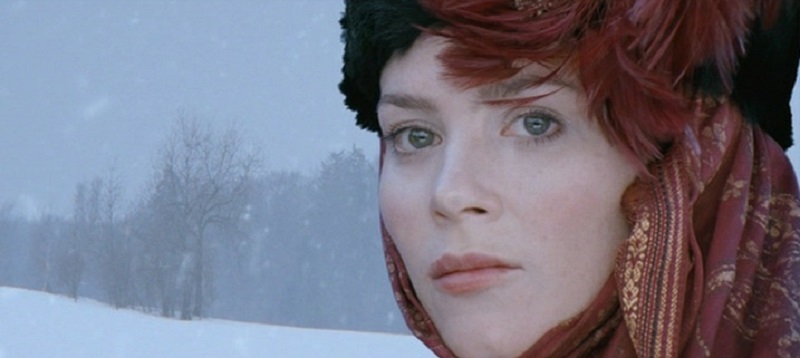
In this film, we get an entirely different view of the story; from Erzsébet Báthory’s experience.
The first thing I noticed about this film was that most of the reviews are either 5 star or 1 star. Those who gave 5 stars, appreciate a period drama that shares different conclusions and an alternate retelling of the Countesses life. Those who gave 1 star were looking for a shocking and gory vampire story where she is a lesbian vampire tyrant who seeks eternal youth through the blood of virgins.
The film is 2 hours, 20 minutes of beautiful Czech countryside, great narration and a story of a woman trying to hold on to her property in a time when men took whatever they wanted.
In this cinematically gorgeous retelling, the Countess is also a healer who heals the villagers. She speaks numerous languages, reads and writes and keeps a journal with her “medical” records of symptoms, and so forth.
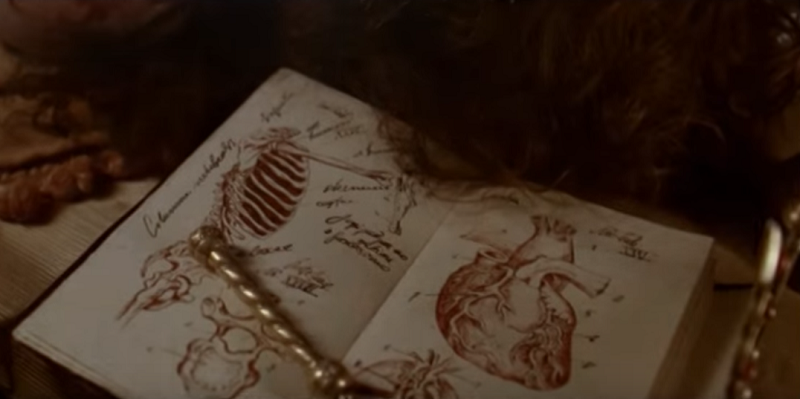
She conducts medical experiments and even rudimentary autopsies in the “hospital” beneath her castle.
The viewer is plunged headlong into the long and bloody conflict between the Christian nations of Eastern Europe (including Hungary, The Holy Roman Empire, Transylvania, etc.) and the Ottoman Turks.
The wars keep Erzsébet’s husband, Ferenc away for years at a time. Even when he’s at home, Ferenc is no prince charming. He rapes Erzsébet while she’s pregnant, causing her to miscarry with their son.
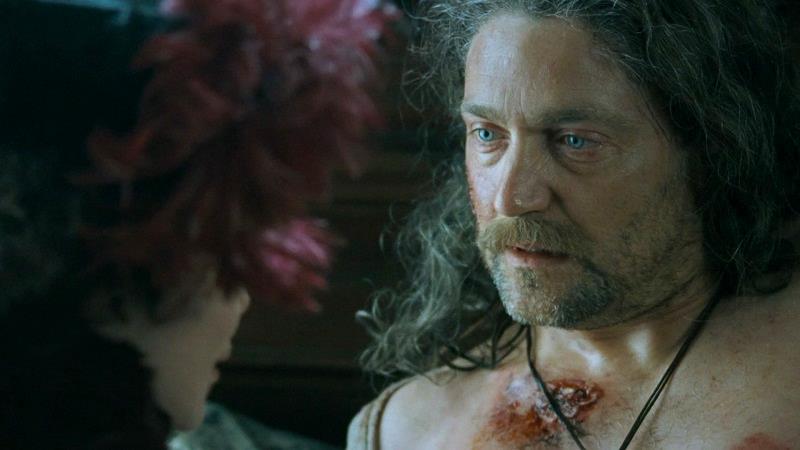
He’s subsequently captured by the Turks, though with the aid of his friend, Thurzo, he escapes. In Ferenc’s absence Erzsébet amuses herself with an affair with Italian painter, Merisi da Caravaggio.
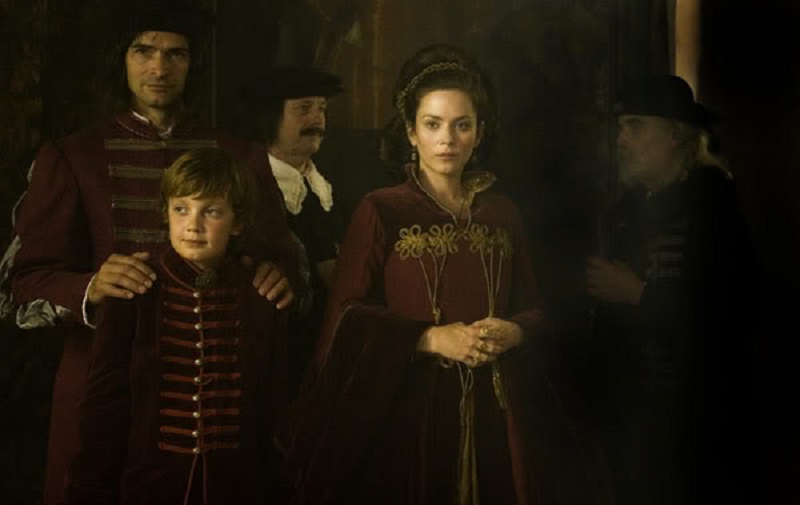
Their passion for color, herbs and the human body begins to show itself in their playfulness
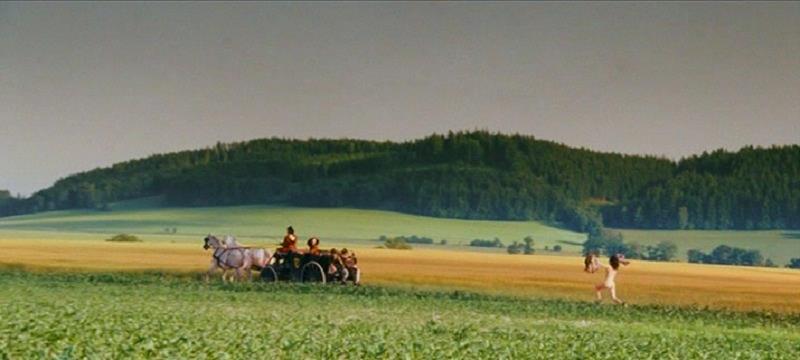
And later, in their passion.
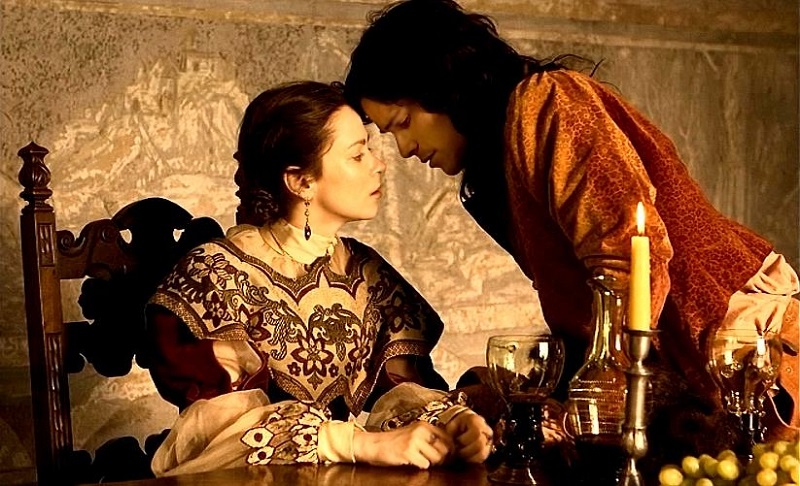
They share a bond in their quest for understanding the art of the human body.
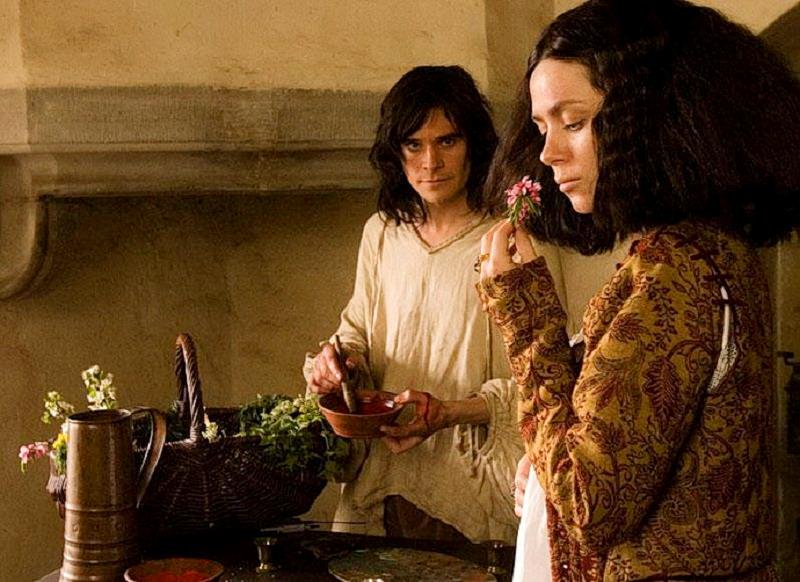
And he is a gentle lover and a friend to Erzsébet.
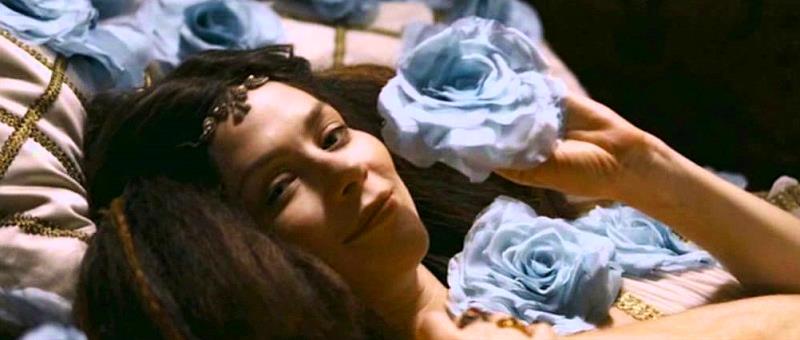
When Ferenc returns, he’s suspicious of the painter and contrives to poison him, but Erzsébet drinks the poison by mistake. Caravaggio escapes and Erzsébet survives, barely.
Panicking and afraid she will die, her husband Ferenc takes her to the herbalist (a reputed witch), Darvulia, who saves Erzsébet from poisoning and thus their relationship is formed.
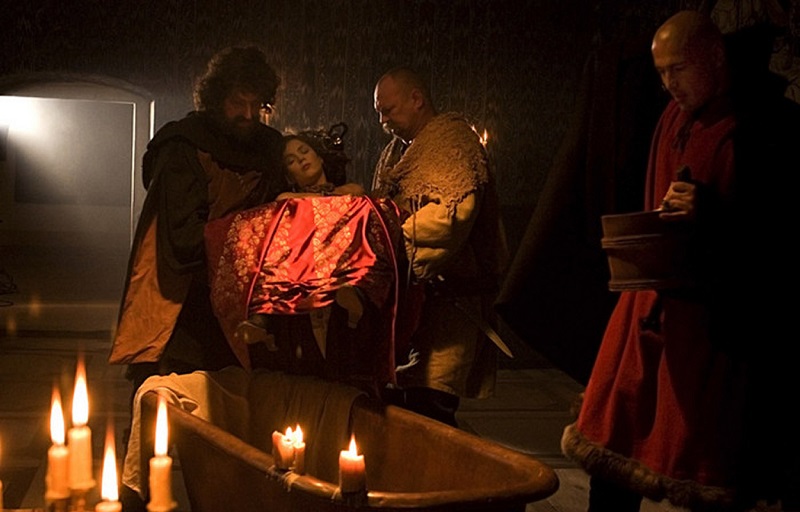
Darvulia becomes Erzsébet’s most trusted companion.
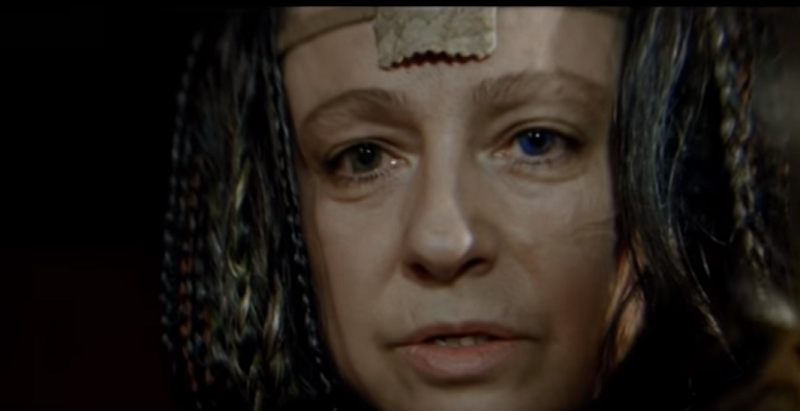
Under Darvulia’s care, Erzsébet’s behavior becomes erratic, sometimes violently so.
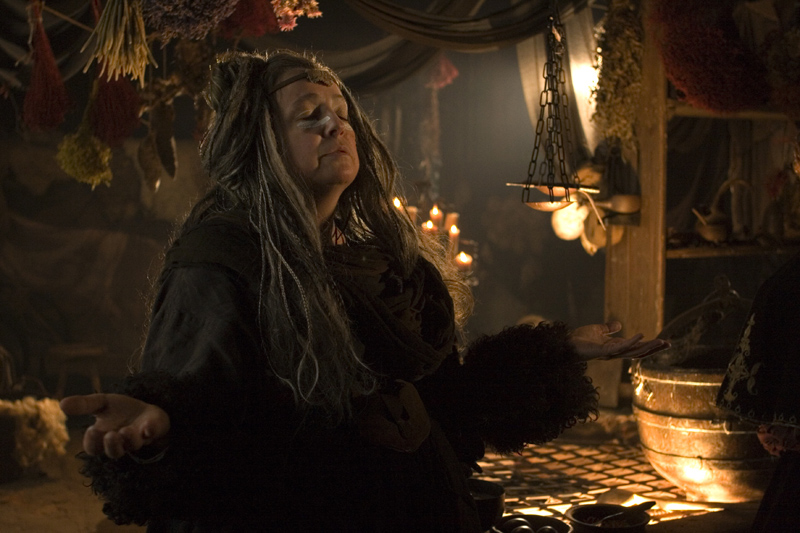
Meanwhile, maidens in the area have been dying of seemingly unrelated causes, and Erzsébet is seen bathing in a large tub of red liquid as the girls’ now-mutilated corpses are buried nearby.
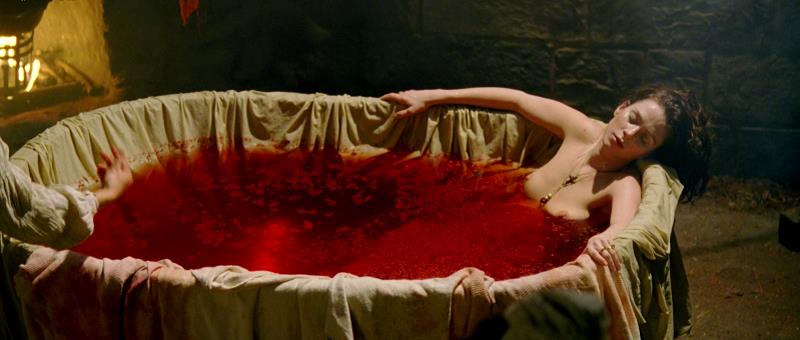
The servants in her castle also begin to die in mysterious ways.
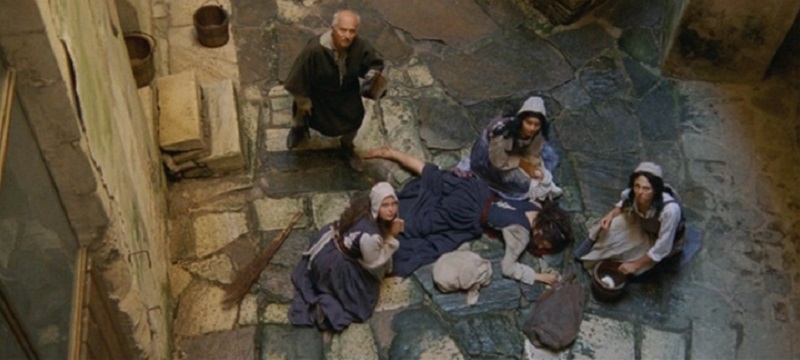
Two Catholic monks arrive to investigate the rumors being spread about her by the local Lutheran pastor, and later they conclude that the red blood bath is not that but is rather simply water which is colored red by a blend of herbs.
But that does not stop Thurzó or his hunger and greed.
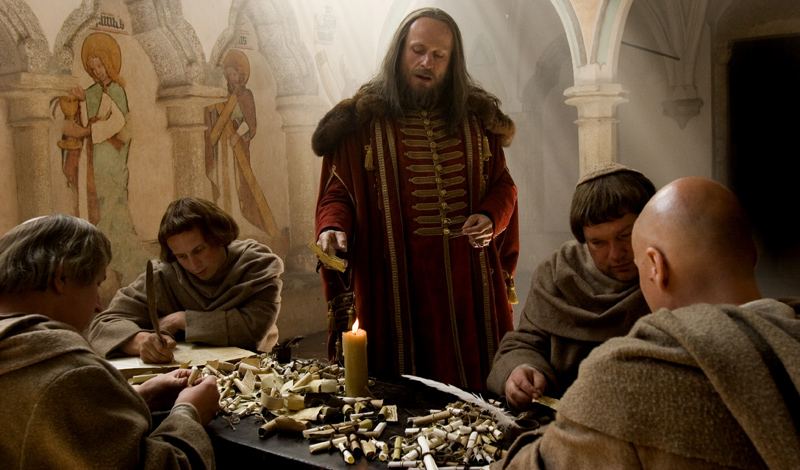
After Ferenc’s death, Erzsébet’s enemies circle and Erzsébet quarrels with the scheming Thurzó, who is so grotesque, he even tries to proposition her at her husband’s funeral. Of course she refuses him. He tells her that Ferenc had promised him one-third of her kingdom and she tells him there is nothing of that sort written in his will.
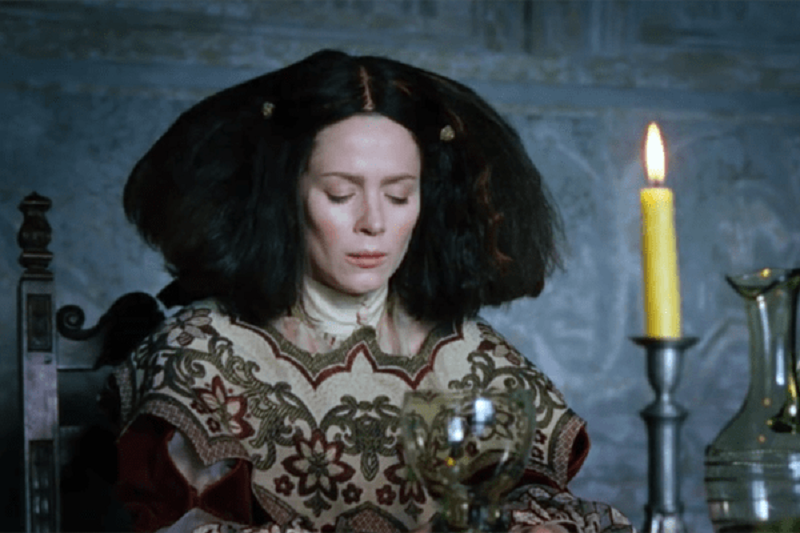
This enrages Thurzó and his lover, who is also gifted with herbs, offers to help him get revenge for the rejection.
Soon afterward, Erzsébet begins to have surreal visions and episodes. In one of these, she stabs a woman to death with scissors. Afterwards, she confesses to Darvulia that she can no longer tell her dreams from reality.
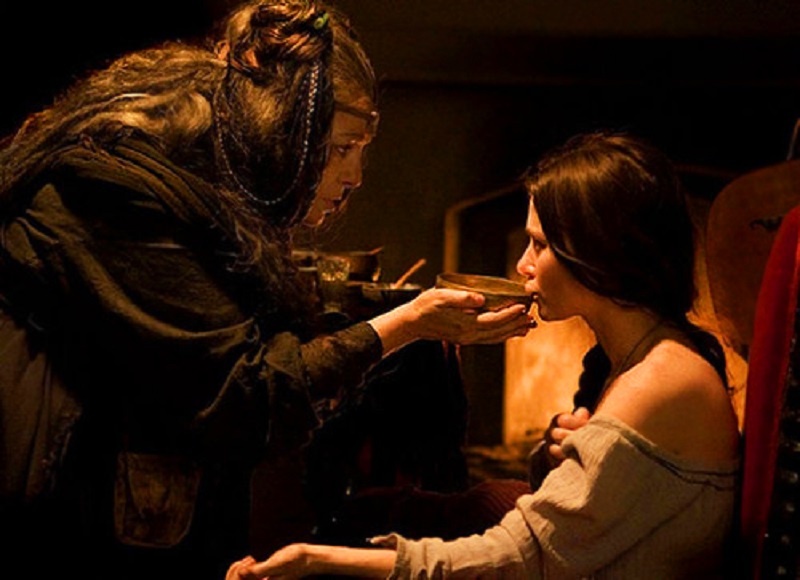
Darvulia discovers that someone has been placing hallucinogenic mushrooms in Erzsébet’s drinks; yet Erzsébet cannot remember clearly and believes Darvulia responsible. She has the woman she trusted most, thrown out. She drives Darvulia away because she believes she has betrayed her.
Thurzó and his wife then capture Darvulia and torture her, cutting out her tongue. Before she dies, she writes Thurzó’s name in blood on her cell wall and Erzsébet swears vengeance on him.
And that is when Erzsébet’s life really begins to unravel…
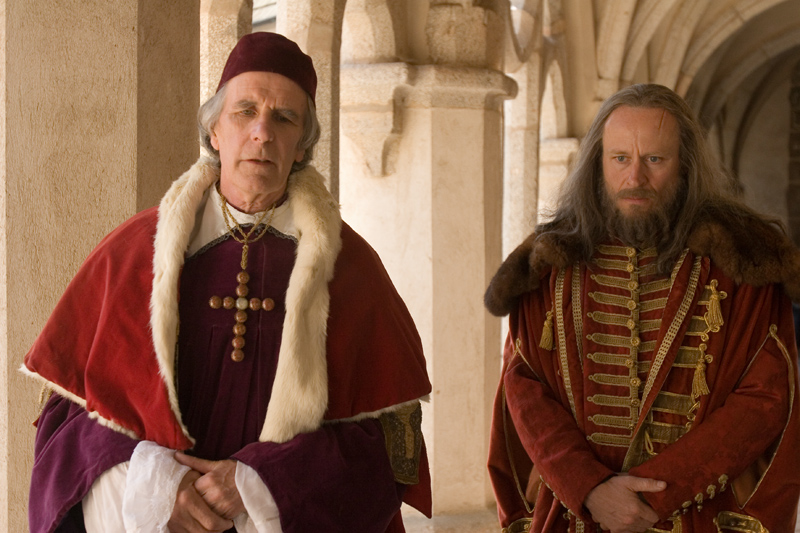
Thurzó then enlists Erzsébet’s sons-in-law and other allies to prosecute her for witchcraft.
They are willing participants since she has already told them that only the son would be the sole heir.
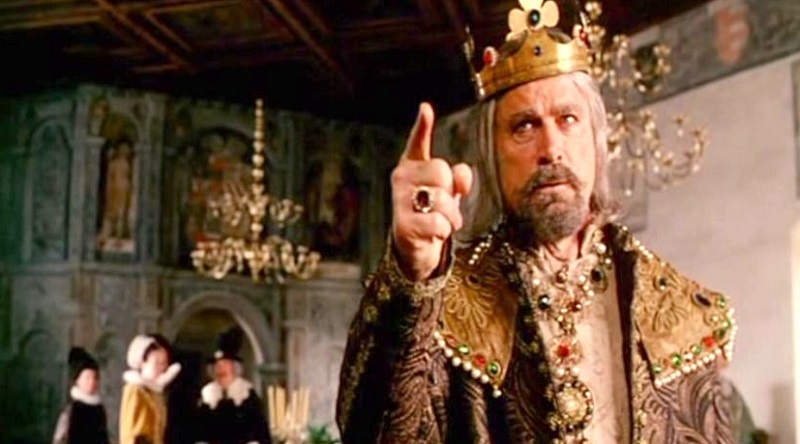
When their plans repeatedly fail, they nonetheless capture the Countess and they torture members of her household to try to obtain incriminating information. They then execute the servants for their alleged crimes, and lay the blame on Erzsébet, who is subsequently imprisoned.
It seems though Thurzó finally has her exactly where he wanted her.
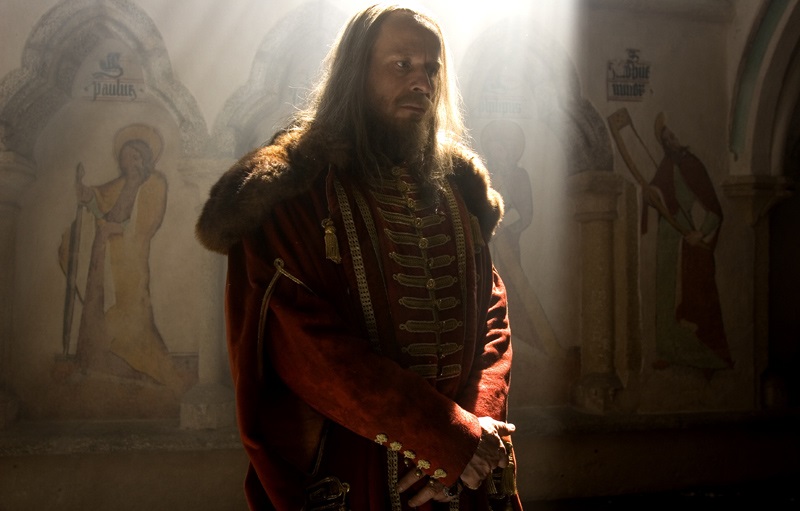
And remember, he is in charge of her kingdom.
Anna Darvulia was rumored to have influenced much of Báthory’s sadistic behavior, but that is only speculation. Báthory’s main collaborators after Anna’s death were her maids; Dorottya Szentes, Dorota Sentéšová, or Dork, Ilona Jó, or Helena Jo, Katalin Benick or Katarína Benická and the dwarf or youth known as János Újváry, Ján Ujvári, or Fičkó. Except for Benická, they were all executed at Bytča on January 7, 1611. Benická’s guilt could not be proven because recorded testimony implied that she had been dominated and bullied by the other women. Two of the convicted had their fingers severed before being thrown onto a blazing fire, while Fickó, whose guilt was deemed the lesser, was beheaded before being consigned to the flames. A public scaffold was erected near the castle to show the public that justice had been done.
Shown in her isolation and despairing over her separation from her son, Erzsébet lies on her bed and begins to sing a hymn; the flames from her candles rise and engulf her in flames. With her death, the kingdom passes solely to her son and once again, Thurzó has nothing.
Thus, upon hearing of her death, he concedes that she has once again made the move he least expected, as when they once played chess together, and admits that he has always loved her.
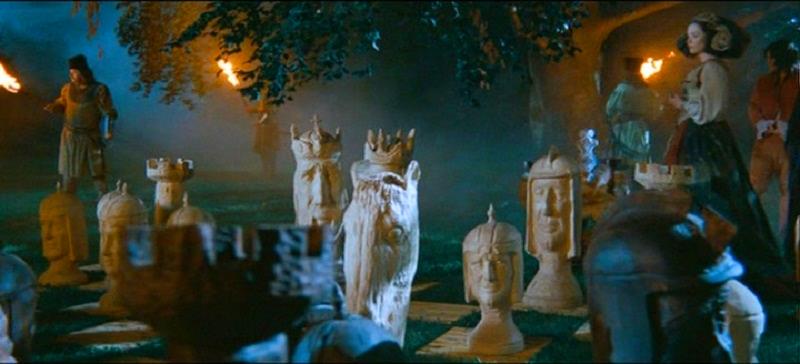
Though she went down with the reputation of the most horrible woman in the history of the world, in the end, she was true to her property and lands, her son and outsmarted the man who was supposed to protect and serve her and instead betrayed her.
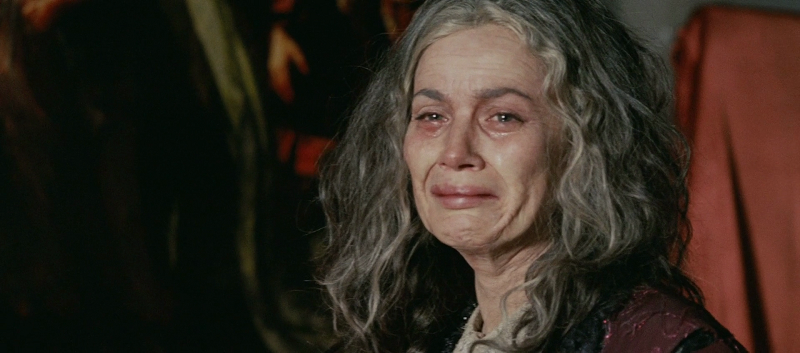
In the end, though the world believes another truth, Erzsébet Bathory may actually be resting in peace.
It’s an interesting idea and a very believable one. Remember that there really was no evidence except the bodies that Thurzó and his men found (planted). To prosper, Medieval Europeans needed rights to own land, dwellings, and goods and Erzsébet was not giving up any part of her lands or property to Thurzó, and she insulted his manhood, rejecting his sexual advances.
All we really have from history is primarily Thurzó’s account and the testimony from his people. King Matthias II pushed on Thurzó and let’s not overlook Istvan Magyari, a local Lutheran minister/priest and his vehement accusations. In fact, one source sites that the official complaints which started to come in in 1602, were the direct work ofMagyari. He reportedly lodged papers in Vienna.
Pretty much every slander you can imagine has been thrown at ‘The Blood Countess’. Milder accusations are that she engaged in abduction, torture, witchcraft and sexual perversion. Harsher ones claim that she mutilated young girls and bathed in their blood (apparently believing that it would preserve her beauty).
Rubbish.
The only evidence of “blood baths” recorded were actually recorded as herbal baths.
Finally, if you follow the money, I would agree that Thurzó was responsible and Erzsébet was a victim to the patriarchal beliefs of the time because from the last century of the Middle Ages onward, numerous restrictions began to be placed on women’s work, and guilds became increasingly male-only. Female property rights also began to be curtailed during this period. Women who did not “get with the program”, so to speak, were witches, cavorting with the devil, and worse – in her case, made into a murderous madwoman.
From the castle of Cachtice, which had a reputation of unconquerable mansion in all Middle East Europe, only ruins now remain as you have seen in the images in this post. The Chateau of Cachtice under the keep disappeared entirely. Today there is only a small museum in a small village, owning the only portrait of former monarch of the whole region, Erzsébet.
Not even her age is possible to determine from the portrait of very questionable quality. She voluptuously looks upon us with sad eyes, a face of melancholy. Her strictly closed lips demonstrate, that she was an energetic woman, yet meanwhile her big eyes are revealing her boldness and sense of romance…
Which brings me to an interesting sideline in the story – Erzsébet’s relationship (and romance) with Michelangelo Merisi da Caravaggio, the Italian painter.
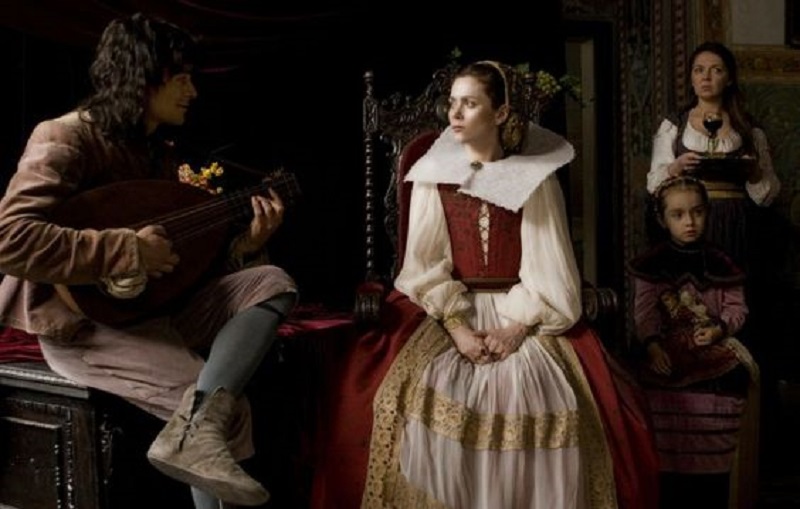
In the film, she’s dressed in the same manner as in one of the two only existing paintings from the time. Yet in the film, Caravaggio paints several portraits of her, and sketches others in her court. Is there any evidence to their relationship or was that all destroyed when the powers that be decided to erase her from history as anything but a blood thirsty murderess?
Erzsébet lived in a time of wars for power and religious believes and her life, afterwards as a widow owning enormous wealth, was not easy. Hungary was divided in two empires, Hapsburgs and Osmanian realms, capitol city of Hungary was Bratislava. Slovakia and a part of Poland belonged into so called Upper Hungary, princedom of Seven castles was located in territory on east, which was ruled by a seven-castle prince and polish king Zikmund Bathory, and later his nephew Gabriel. Until the beginning of a Fifteen-year-old war with Turks in 1591 were relationships between Hapsburgs and Osmanian realm basically peaceful.
Erzsébet’s husband Ferenc Nadasdy had also enacted a major part in history of Hungarian politics when war against Turks was unleashed. However, the original plan was a failure, the country was plundered by a constant war, the displacement of Turks was not successful, and Sevena-cestle was disorganized. A civil war begun during last war years (1604-1606) when Istvan Bocskai fought not only for ending of war conflict with Turks, but also for freedom of protestant belief, generally against Hapsburgs efforts for re-catholicization of the country.
Thurzo’s tendency to destroy Erzsébet was, according to then conditions, most likely motivated by passion for her enormous wealth. Even, after her death in 1614, Thurzo secretly supported efforts of Gabriel Bethlen for gaining of Bathory possessions, which caused several staged processes, where allegations from witchcrafts were used.
The main motive of Thurzo’s actions during 17th century was a conflict with Bathory family and antagonism against it. Although he never did gain any of their possessions. In the end, Thurzo lived only two years longer than Erzsébet, dying 1616. Five years later died his only son, and the family of Thurzo died out.
Who was Erzsébet Bathory, really?
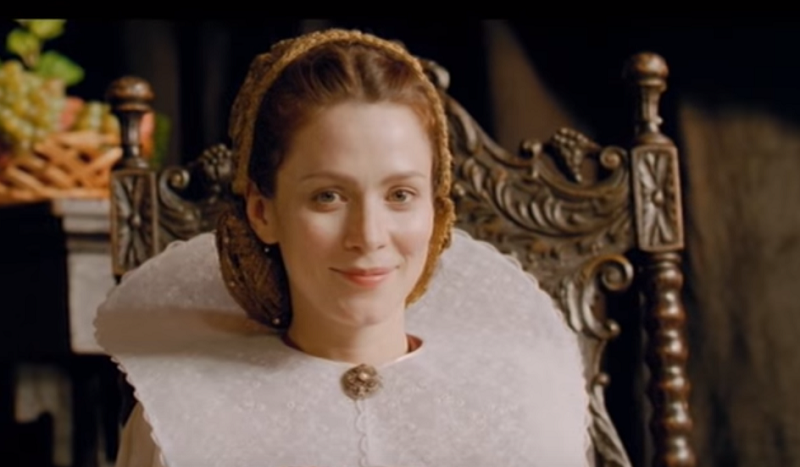
Was she really a “bloody countess”, as some historians name her?
Or was she a very well educated woman mastering several languages and seriously interested natural healer?
Was she a graceful person of fine taste and at the same time so rich, that she irritated many royal women with her original robes tailored for her in far Italy?
Was she a sadistic murderess, or a victim of former relationships full of dark intrigues, which were sewed by someone powerful, lusting for her fabulous fortune?
Was she a cruel and merciless mistress or a vulnerable, lonely widow?
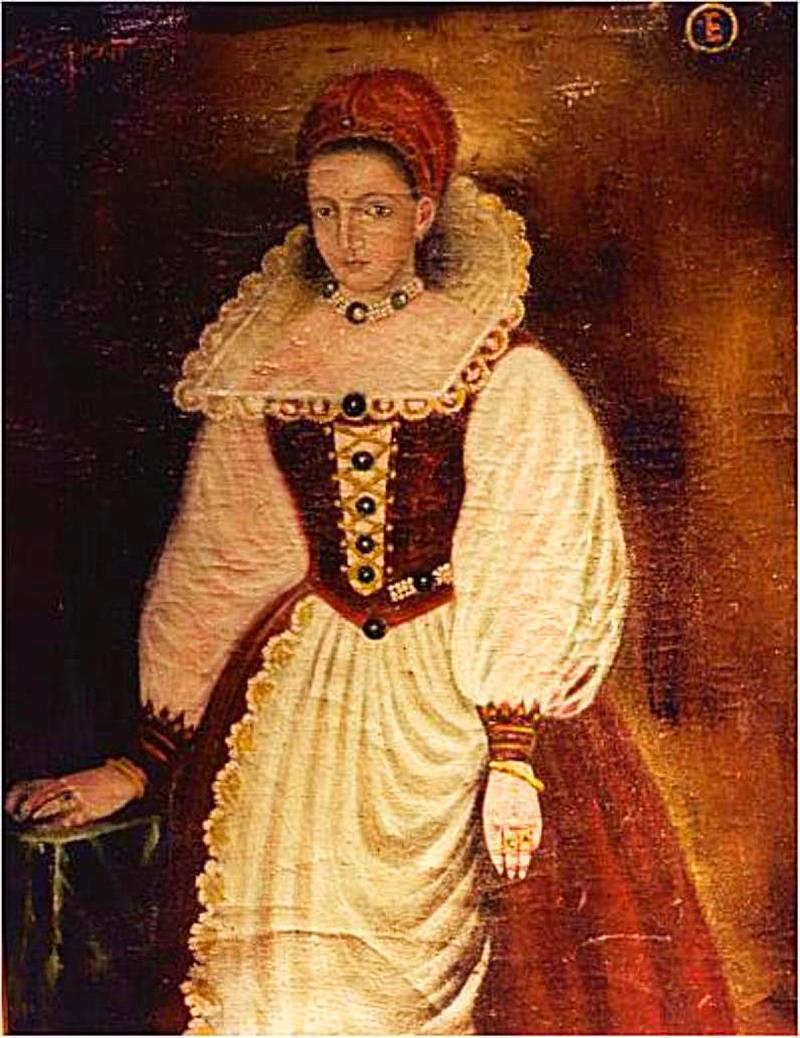
The original portrait of the Countess from 1585 is lost. However, this is a fairly contemporary copy of that original, probably painted in the late 16th century. She was 25 when the original portrait – one of only two remaining images of her from that time period – was painted.
It’s possible she was both, but the film makes us lean towards the idea that she was a woman in the middle ages, who had much that others desired.
This, of course, also made her the perfect victim of a Patriarchal church and rule. The perfect target for György Thurzó, and let us not leave out another person who was even more advantaged by Ferenc’s mysterious death, Emperor Matthias II.
It was he who sought to acquire the extensive territories produced by the Báthory-Nádasdy marriage. After the death of Elizabeth, the diminished possessions of her estate were divided among her four children. When Thurzó died, it was Emperor Matthias who accused the Báthory-Nádasdy children of treason based on the crimes committed by their mother.
All property and land formerly belonging to the Nádasdy family, in addition to the new lands that had been accumulated from their political family, became available to the Hungarian crown.
The descendants of Ferenc and Elizabeth were banished from Hungary and went to Poland. Although some returned to Hungary after 1640, that was the end of the noble status of the Báthory-Nádasdy family in Hungary.
It is important mention here that when Elizabeth Bathory married in 1575, it was not just she that took her husband’s family name, Nadasdy, but her husband, Francis Nadasdy, also took her family name Bathory as well. Officially their legal name became, Bathory Nadasdy. Their children too, were Bathory Nadasdys.
Following her trial, one of the penalties decreed by the King of Hungary, Mathias II, and passed into law by the Hungarian Parliament (Diet), was that her name ‘Elizabeth Bathory’ be declared illegal and thus she became a non-person.
In fact, it became criminal to speak, write or bear her name anywhere! Even objects visibly identifiable with Elizabeth Bathory were to be destroyed if ever found.
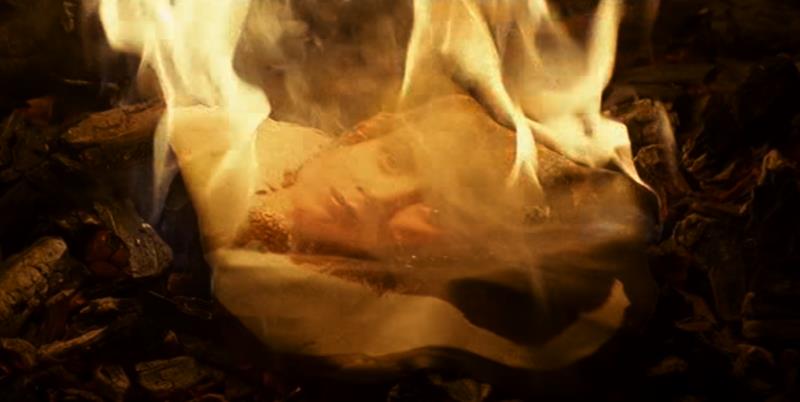
(Talk about burying the evidence, forever!)
Thus, anyone possessing any of her former possessions that wished to preserve them would have either removed or masked her name so as not to run afoul of the law.
This painting is believed to be of Bathory, painted in 1540.
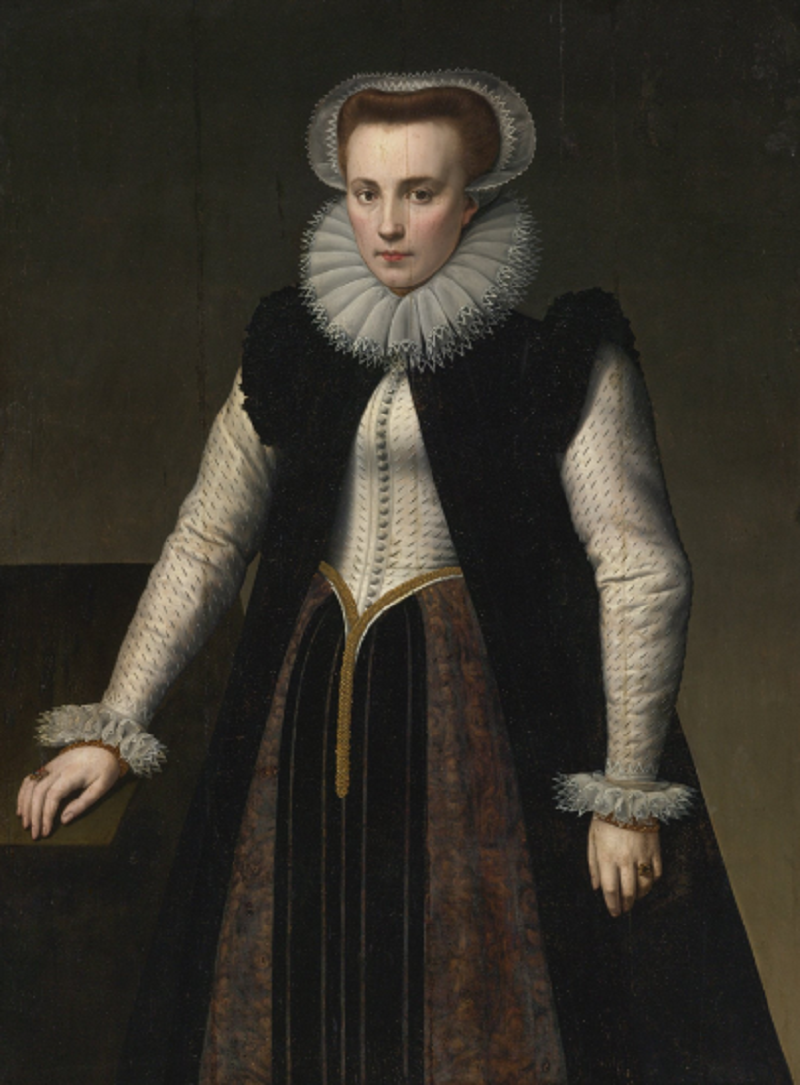
This actual and original 1580 Elizabeth Bathory portrait was recently ‘discovered’ by its current owner at a Sotheby’s of New York Master Paintings auction held on June 4th, 2015. The painting itself has been verified by art experts, and offered for sale as an original work of art, painted by Anthonie Blocklandt van Montfoort in 1580, titled Portrait of a Lady, three quarter length, in a ruff with matching lace cap and cuffs.
Per Sotheby’s own condition report, it is an oil on panel, signed with an initial and dated upper left: ‘1580 / .B.’
It is believed that the cryptic initial ‘.B.’ simply stands for Bathory and the person that marked this painting did so after her trial and incarceration so as to preserve the portrait’s identity. That person was most likely George Pech, a Viennese merchant who was charged by Elizabeth Bathory herself with the sale of many of her more valuable movable assets between 1604 and 1610. Perhaps that is why we have the cryptic initial ‘.B.’ on this painting.
Legally, Elizabeth Bathory was referred to as the ‘Lady Widow Nadasdy.’ Even her surviving son, Paul, for example, was forced to drop his mother’s ‘Bathory’ family name from his, thus becoming simply a Nadasdy, as are all his descendants to this very day.
If it was indeed a conspiracy or set up against her, and what this film proposes is true, then a great travesty has been committed against this women and her descendants to this day. Where she should have been celebrated and remembered as an intelligent and powerful woman of her time, she was instead locked away, until she died – never being offered even the opportunity to speak in her own defense.
Later, in the 1800s and through modern times, many likenesses of Bathory have been created, but the two above are the only surviving known paintings from her lifetime. I’d love to have seen the Caravaggio’s of her and her family, if they really existed. Perhaps they do somewhere, and time will unlock more clues into her mysterious life. Or there are others from the time that do not identify her, as van Montfoort’s painting above.
Erzsébet Báthory has been portrayed on film some 30 times since 1970. Most of these have retold the story of a sadistic and vampiring murderess. This is the only film which offers us an alternate view.
Originally, the two covers appear to market the film to the blood-sucking vampire fans…
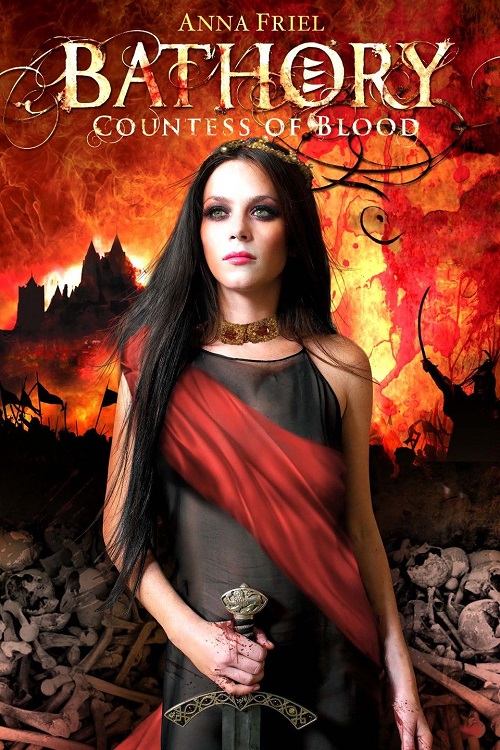
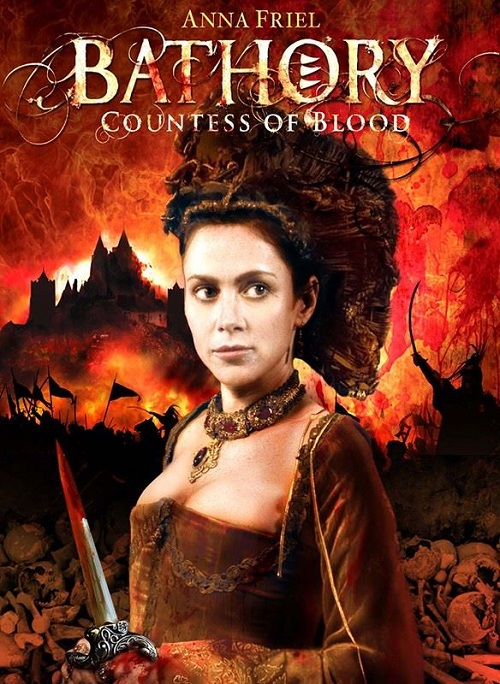
But the latest cover shows the film more as it is, a period drama biography of the Countess Bathory and her life.
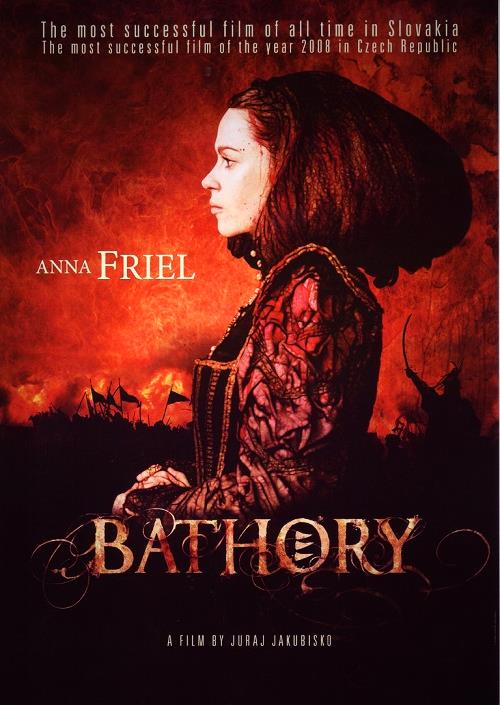
The filming took place in Cachtice, Slovakia, Pribylina, Slovakia, Czech Republic, Slovakia, Austria, Hungary
Rated R for strong violence and torture, sexuality and some graphic nudity (including male, full frontal). It is a full
141 minutes in length and is in the English language, though some Czech is heard.
In this film, we see Countess Erzsebet Bathory as a woman, perhaps centuries ahead of her time.
One day the truth will be known.
Here is the entire soundtrack…
Bathory is certainly handsome to watch. It features gorgeous costumes and scenes of the landscapes, and it’s filmed in the same region in which Erzsébet Bathory actually lived. It looks like quite a high budget film and the hallucinogenic scenes are watercolory and paint-like.
Finally, here is an extended trailer… (It may be showing as grey, but click the play button – it does play and is worth the watch to learn more about this film.)
Watch now on Amazon Prime or Netflix.
If you have not already subscribed to get TresBohemes.com delivered to your inbox, please use the form below now so you never miss another post.
Remember, we rely solely on your donations to keep the project going.
Become a friend and get our lovely Czech postcard pack.

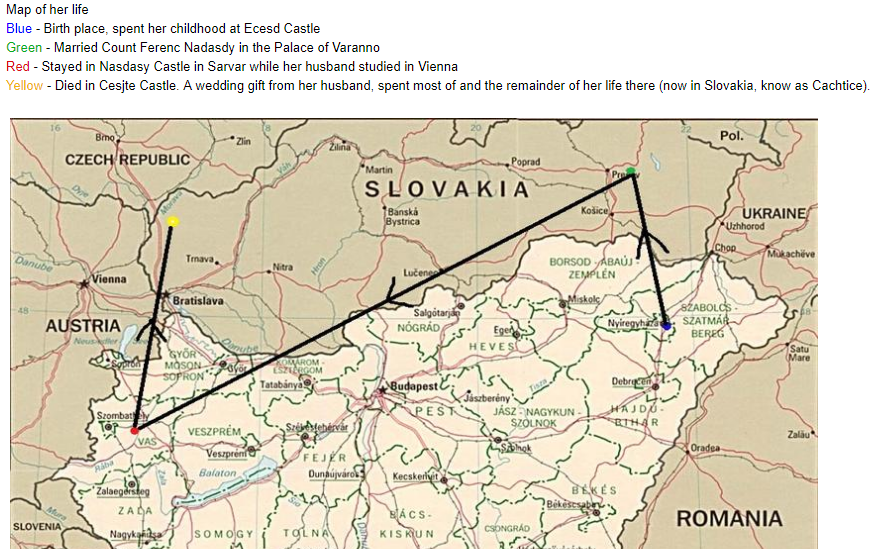



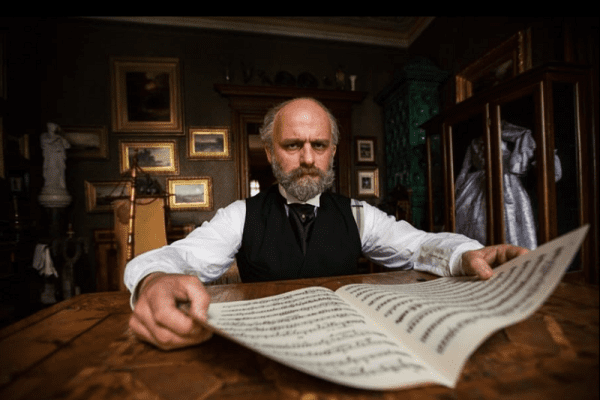















I heard they based the Dracula stories on her. Apparently she killed over 650 victims.